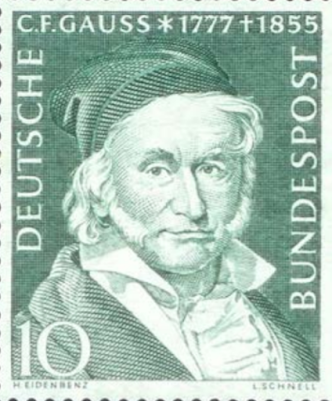During his lifetime, the Braunschweig (Brunswick) native Carl Friedrich Gauss was called princeps mathematicorum, the prince of mathematics. Gauss is generally regarded as one of the greatest mathematicians of all time for his contributions to number theory, geometry, probability theory, geodesy, planetary astronomy, the theory of functions, and potential theory.
Gauss was born on April 30, 1777, in Brunswick (Braunschweig), which was then a residential town. He was the son of Gebhard Dietrich Gauss, a bricklayer, and Dorothea Emerenzia Gauss.
At the age of 14, Gauss came to the attention of the Duke of Brunswick: the Duchess saw Gauss reading in the palace yard one day, and was much impressed that Gauss understood what he was reading. When Gauss entered the Collegium Carolinum in 1792, the Duke of Brunswick, Carl Wilhelm Ferdinand (1735-1806), paid his tuition.
Gauss learnt mathematics primarily on his own. He was an autodidact. His library allows to follow the traces of his learning. He began with easy books, like the reckoning masters. For example, Gauss’ library contains books of Johann Hemeling and Valentin Heins. Mathematical textbooks came after.
At the Collegium, Gauss studied the works of Newton, Euler, and Lagrange. His investigations on the distribution of primes in 1792 or 1793 give an early indication of his interest in number theory. He also developed his strong love of languages: he “completed his knowledge of the ancient languages and learned the modern languages”.
Gauss attended the University of Göttingen and in 1799 obtained a Doctorate in Mathematics from the University of Helmstedt. About this time, he turned his attention to astronomy, making brilliant computations of orbits of asteroids.
His dissertation, written in Latin, of 1799 is dedicated with enormous gratitude to his sovereign “Serenissimo Principi Ac Domino Carolo Guilielmo Ferdinando”. His dissertation adviser was the most respected German mathematician of the time, Johann Friedrich Praff (1765-1825).
In 1801 he published at last his Disquisitiones arithmeticae, his arithmetical masterpiece concerning number theory. His sources had mostly been French mathematicians and Euler. The book is divided into seven chapters, called sections. The first three are introductory, sections IV–VI form the central part of the work and section VII is a short monograph devoted to a separate but related subject.
Gauss’ astronomical main work Theoria motus corporum coelestium in sectionibus conicis solem ambientium (Theory of the motion of the heavenly bodies moving about the sun in conic sections) appeared in Hamburg in the early summer of 1809.
In 1807, Gauss became director of the observatory in Göttingen, a post he held until his death in 1855.
Carl Friedrich Gauss (1777-1855) – Mathematician and physicist
What constitutes a scientist? A scientist is an individual deeply immersed in the field of science, possessing expertise across various educational domains and refined skills within specific branches of knowledge. A scientist is characterized by advanced proficiency in a particular scientific discipline and employs scientific methodologies in their pursuits.
Wednesday, December 29, 2021
The most popular articles
-
Physicians have used herbs and other plants products to treat disease for centuries. During the 19th century, scientist began to pinpoint th...
-
German agricultural chemist Franz Ritter von Soxhlet was born in Brno on January 12, 1848 of Belgian parents. Obtaining hi PhD from Universi...
-
Carolus Linnaeus was also known as Carl Linnaeus, Carl Linne or Carl Von Linne. He was born in Rashult, Sweden on 23 May 1707. He was the so...
-
Erlanger is a US physiologist who, in collaboration with Herbert Gasser, developed techniques for recording nerve impulses using a cathode ...
-
Konstantin Eduardovich Tsiolkovsky was an outstanding Russian scientist, an indefatigable student, a man of great talent. Konstantin Tsiol...







